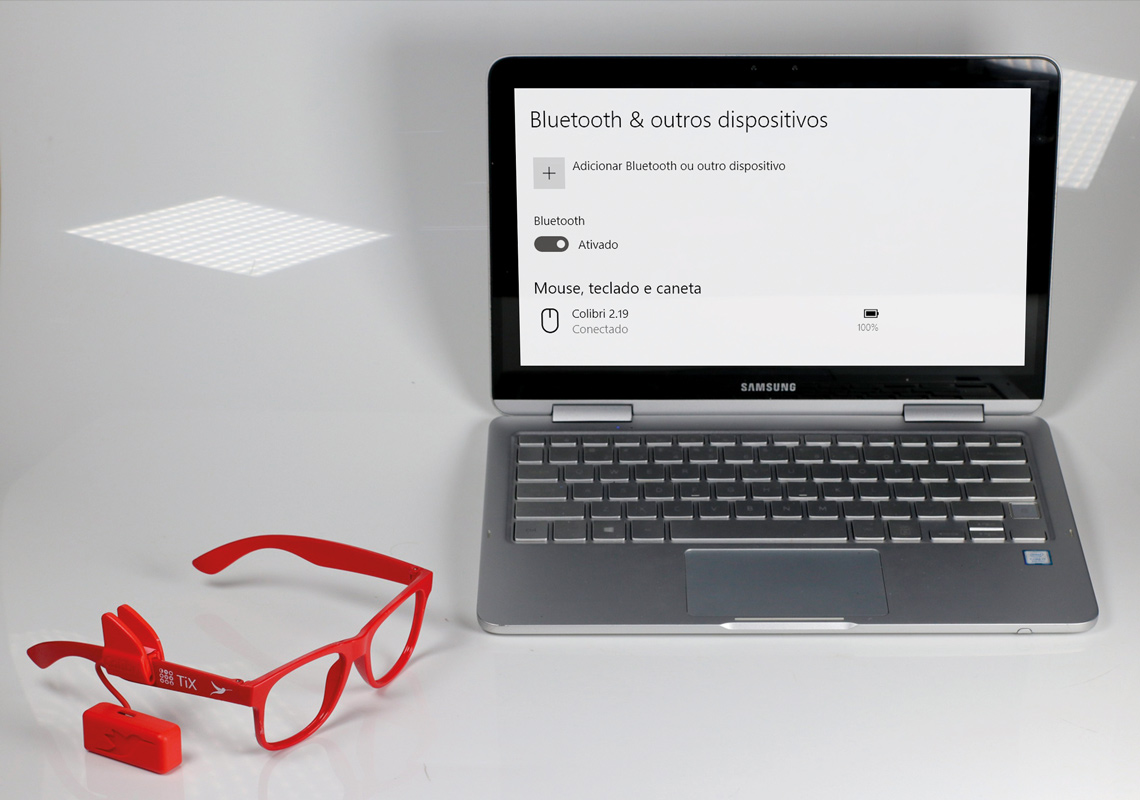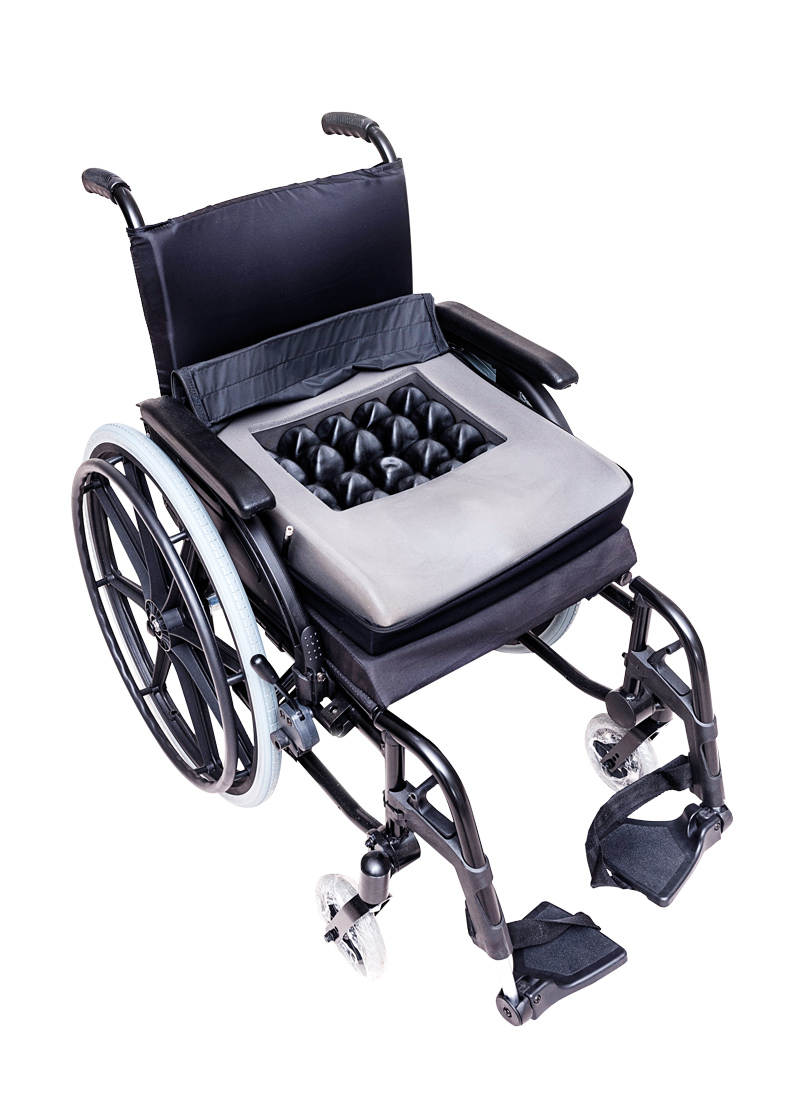Recent years have seen major advances in the development of equipment and services designed to provide functional abilities to people with disabilities, called assistive technologies. According to the World Intellectual Property Organization (WIPO), more than 130,000 patents were filed from 1998 to 2020 related to innovations aimed at alleviating problems faced by individuals with mobility difficulties or limitations to their vision, hearing, or motor coordination. The data is part of the report “Technological Trends 2021: Assistive Technology,” prepared by WIPO, a self-funding agency of the United Nations (UN).
The principal focus for innovation is in an area called emerging assistive technologies, which involve robots, artificial intelligence, sensors, and other digital resources, including accessibility tools in operating systems and computer and smartphone apps that provide Braille keyboards, voice control, and eye trackers that let users control their computers using only eye movements.
Since 2013, patent filings for emerging assistive technologies have grown at a rate of 17% per year, a growth rate three times greater than conventional innovations, such as enhancements to wheelchairs and hearing aids.
In 2021, the majority of these new technologies were in the development phase, with only 18% already on the market. For WIPO, this is an indication that the coming years will see a boom in rollouts of robotic and digital assistive products and services. The report shows that China, the United States, Germany, Japan, and South Korea are the top five sources of innovations in this area. Brazil does not rank very high in world production, with a participation of only 0.21% of global exports.

A robotic cycle ergometer designed to provide physiotherapy for people with spinal cord injuriesLéo Ramos Chaves / Revista Pesquisa Fapesp
The benefits of these technological advances, however, are not accessible to the entire community of people with disabilities. According to the World Health Organization (WHO) and the United Nations Children’s Fund (UNICEF), more than 2.5 billion people on the planet need one or more assistive products to alleviate physical disabilities or overcome age-related physical and motor limitations. Of this total, over one billion have no access to these remedies, most of them people in low- and middle-income countries.
In São Paulo, only 28% of individuals with disabilities have assistive equipment suitable for their needs. This finding is from a survey by the Institute of Physical Medicine and Rehabilitation (IMREA) of the Hospital das Clínicas of the School of Medicine at the University of São Paulo (FM-USP). “We don’t have data for the entire country, but experience shows that conditions in other states are even more precarious,” says physiatrist Linamara Rizzo Battistella, director of IMREA (see Pesquisa FAPESP issue nº 304).
“The country needs a national policy for providing access to assistive technologies. This means acquiring up-to-date equipment in adequate quantities, as well as a strategy to democratize access,” the researcher says. “Technology is fundamental to providing inclusion for people with disabilities in society, in our educational and healthcare systems, and in the labor market.”
Battistella observes that Brazil has centers for innovation capable of developing state-of-the-art technology, but many products don’t find support within government administrations and the productive sector. One example of this problem, she says, is the existence of various Brazilian models of robotic exoskeletons designed for assisting mobility in people with paraplegia. The São Carlos Engineering School of the University of São Paulo (EESC-USP), the federal universities of Rio Grande do Norte (UFRN) and Espírito Santo (UFES), and the University of Brasília (UnB) (see Pesquisa FAPESP issue nº 301) have all created their own versions of mobility exoskeletons. “These are high-quality devices, yet they aren’t commercially available. As a result, users have no choice but to purchase imported models,” Batistella notes.
Below, we present some of the innovative Brazilian products that have recently been launched or are in an advanced stage of development, grouped by areas of interest.
Digital accessibility
The use of computers and smartphones is a problem for those who suffer from severe motor limitations of the upper limbs (arms and hands). In Brazil, it’s estimated that the problem affects more than two million people. At the end of 2021, the Minas Gerais startup Tix launched Colibri, the first wireless head-controlled mouse created in Brazil. A device attached to the user’s glasses—or glasses frames without lenses—follows the user’s head movements, while clicks are performed by blinking the eyes or with a pause in head movement. To avoid undesired clicks, the eye-blink timing or the head-motion pause is pre-set on a case-by-case basis. “The user doesn’t need to adapt to a predefined setup, instead it’s the product that adapts to the user,” explains electrical engineer and Tix founder Adriano Rabelo Assis. Colibri has almost 400 users, including service subscribers, who pay R$120 per month, and other customers who bought the device outright for around R$3,000.

Colibri wireless head mouse: for people with upper limb limitationsTix Assistive Technology / Publicity
The company also developed Telepatix, an app for computers and smartphones that provides a keyboard operated by blinking the eyes, and Tix, a touch-sensitive keyboard with only 11 keys, each of which represents more than one letter, allowing people with motor impairments to write any word using a sequence of touches.
Another innovative Tix product is an app called Expressia, for helping people with speech difficulties communicate and for teaching individuals with learning difficulties, such as in some cases of autism. The program provides photos and images for constructing sentences.
Smart cushion
At the USP School of Medicine, IMREA has designed an innovative seat cushion equipped with sensors to cover the seat of wheelchairs, which is now in its final stages of development. The sensors, programmed with artificial intelligence (AI), will regulate the air pressure of the pillows in such a way that proper blood flow is uninterrupted, even after hours of sitting in the wheelchair, thus preventing pressure ulcers and bedsores.
“A victim of spinal cord injury doesn’t have the necessary nerve stimulus to feel and report their discomfort,” says Battistella, director of IMREA. Another feature of the pillow is to issue an alert when moisture is detected, allowing, for example, a person with paraplegia or their caregiver to immediately know that it’s time to change their disposable diaper.
IMREA is also developing a robotic cycle ergometer, which helps with physiotherapy for people with spinal cord injuries. Using electrical stimulation, the device artificially reproduces the movements of the lower limbs necessary for pedaling, thus moving the leg muscles, which reduces the loss of muscle mass. It is an incremental innovation, as there are already similar devices available. IMREA’s robotic cycle ergometer provides remote monitoring with sensors for heart rate, blood oxygenation, blood pressure, and temperature.
Translators for the deaf
According to the WHO, more than 80% of deaf people have difficulty clearly understanding the language of their own countries, even when presented in written form. In Brazil, the deaf are educated in Brazilian Sign Language (Libras), which, however, is not understood by the majority of the population. Hand Talk, a startup from Alagoas, created a smartphone app in 2012 that translates text and audio in Portuguese into Libras, with the help of two animated onscreen avatars, the characters Hugo and Maya, who perform the signs of the Libras language. The UN awarded the initiative as the Best Social App in the World in 2013. The application has already been downloaded 6 million times, at no cost to users.
With the help of an avatar, an app translates texts and audio content from Portuguese into LibrasHandtalk
In 2014, Hand Talk launched the Handtalk Plugin, a tool that translates internet texts into Libras, also using avatars. The innovation has already been implemented on the websites of more than a thousand companies. The amount charged is defined on a case-by-case basis. Ronaldo Tenório, founding partner of Hand Talk says the smartphone app is also available as an English-to-ASL (American-Sign Language) translator and a version of the plugin will be launched in the United States in 2023 for translating corporate websites. The startup is also working on new technology based on artificial intelligence (AI) aimed at recognizing human sign language and translating Libras into Portuguese.
Using AI for bidirectional translation from Portuguese to Libras and Libras to Portuguese is also the focus of a project by the Pernambuco Center for Studies and Advanced Systems in Recife (CESAR), in conjunction with the Chinese computer manufacturer Lenovo. Another initiative of their partnership is to create the first Libras to Libras digital dictionary. “Current dictionaries are intended for deaf people who know Portuguese. We want to offer a dictionary in which both the search topic and the explanation of the meaning of that topic are in Libras,” explains William de Neves Gallo [Willian Grillo], interaction designer at CESAR.
A guide for wheelchair users
One source of frustration for those who rely on their wheelchairs to get around is arriving somewhere, such as a restaurant, art exhibition, business meeting, or government office, and discovering that there is no wheelchair access, or an appropriate bathroom provided. The Guiaderodas (wheels guide) app, an initiative funded by FAPESP, was designed to provide prior information on accessibility to public and private places.
An idea launched by Bruno Mahfuz, who has been using a wheelchair for 21 years, the app was chosen in 2017 as the Best Digital Initiative for Inclusion by the UN World Summit Award (WSA). Collaborative by design, the app provides free accessibility information in more than 3,000 cities in almost every country in the world. The users or supporters of the site are guided as to what criteria must be analyzed and an evaluation takes less than a minute. The platform provides information in Portuguese, Spanish, and English and has a news tab with accessibility tips.
“We’re developing an artificial intelligence tool that will make it possible to cross-reference data provided by users with information already in the cloud regarding locations and, thus, improve the service we can provide,” Mahfuz says.

Prototype robot for applying lipstick to visually impaired peopleGUIADERODAS / Studio Stiebler & Bucciarelli Photography
A robot that can apply lipstick
Working with the Boticário Group, CESAR, in Pernambuco, created the intelligent lipstick, a robot equipped with computer vision and artificial intelligence to apply cosmetics to the lips without smudging. The idea is to benefit people with visual impairments or motor limitations. Activated by voice or button, the device—still in the prototype phase—takes a picture of a person’s face, outlines the lips, and sets in motion a robotic arm to carry out the application.
“It already works successfully on mannequins but applying it to humans is more complex. We need to make improvements,” acknowledges Izabela Cavalcanti, Product and Innovation manager at CESAR. One such task is to expand the AI database to recognize all types of skin color and deal with potential scars on the mouth.
Projects
1. Collaborative accessibility guide for people with limited mobility (nº 09/18809-0); Grant Mechanism Innovative Research in Small Businesses (PIPE); Agreement FINEP PIPE/PAPPE; Principal Investigator João Marcos de Mattos Barguil (Guia de Rodas); Investment R$1,199,412.83.
2.Hybrid adaptive strategies for lower limb exoskeletons (nº 19/05937-7); Grant Mechanism Regular Research Grant; Principal Investigator Adriano Almeida Gonçalves Siqueira (USP); Investment R$129,893.49


